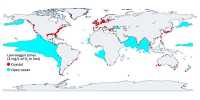Electronic waste, e-waste is becoming a global emergency. Emerging bioleaching technology offers an innovative approach to recycling precious metals from e-waste.
If you equip all the electronic waste generated annually around the world, it will weigh all the commercial aircraft produced so far or the 5,000 Eiffel Tower. According to the United Nations, it is a growing “tsunami” and it is fed by all the phones, tablets, and other electronic devices thrown away every day.
Produced in 2014 44. The generated million metric tons of electronic waste (often abbreviated to e-waste) are produced, 90% of which was sent to landfills, landfills, or illicit trade. Nearly half of Europe and the United States – the EU alone – have
forecast 12 million tonnes of production by 2020 alone. If nothing is done to solve the problem, it is expected to reach more than 120 million tons a year worldwide by 2050.
The rich countries of Europe and North America export most of their e-waste to developing countries in Africa and Asia. Many of these end up on land, where toxic metals come out and enter the groundwater and food chains, threatening human health and the environment. As serious as this problem may seem, we are
working on a solution. Using a process called bioleaching; we are extracting and recycling these metals from e-waste using non-toxic bacteria.
It might surprise you to learn that those toxic metals are actually very valuable. It’s a bitter irony that the e-waste Mountains collecting in the world’s poorest places actually contain a fortune. Precious metals are found in your phone and computer, and each year US$21 billion worth of gold and silver are used to manufacture new electronic devices. E-waste is thought to contain 7% of the world’s gold and could be used to manufacture new products if it could be recycled safely. With an estimated value of $ 62.5 billion a year, the economic benefits of e-waste recycling are obvious. And it will help fill the gaps in the new natural resources needed to produce new products. Some components of a printed circuit board – essentially the brain of a computer – are raw materials whose supply is at risk.
Different metals have different properties, so new methods need to be developed regularly. Metal extraction by bioleaching, although pollution-free, is slower than the traditional method. Thanks though, genetic engineering has already shown
that we can improve how these germs can be used efficiently in green recycling.
Microorganisms chemically alter the metal, freeing it from the surrounding rock and allowing it to dissolve in a microbial soup, from which the metal can be isolated and purified. Bioleaching requires very little energy and therefore has a small carbon footprint. No toxic chemicals are used, making it environmentally
friendly and safe.
tackle devices that are more easily recyclable and deal with the growing problem of indifference are equally important for slowing the impending tsunami.
















